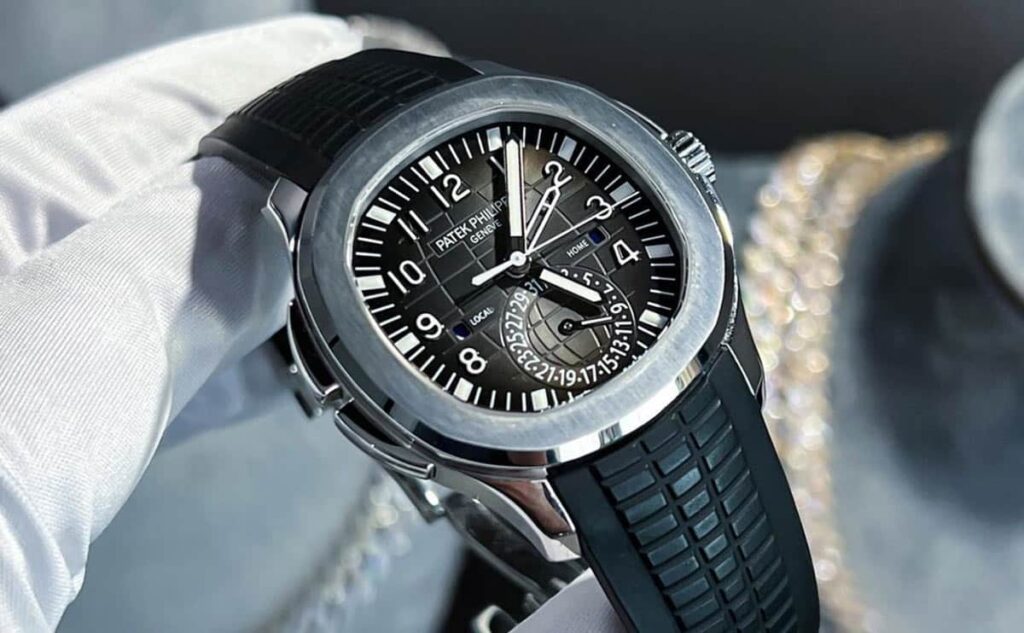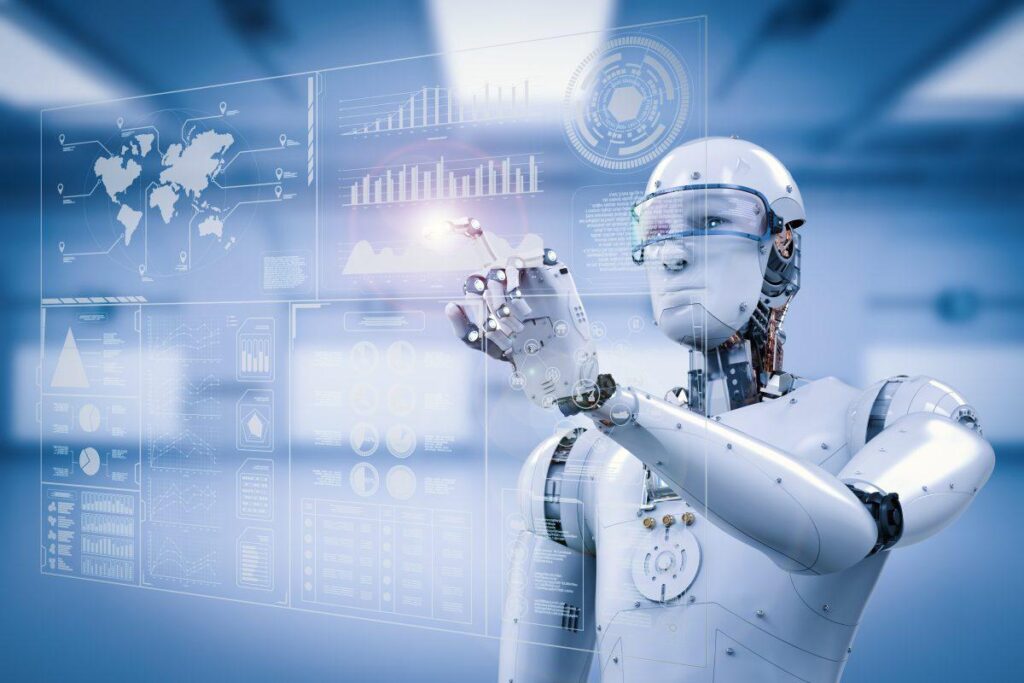Hive Blockchain, a cryptocurrency mining firm based in Vancouver, Canada, has undergone a rebranding process and is now known as Hive Digital Technologies.
The name change aims to highlight the company’s expansion into artificial intelligence (AI) and its evolving focus on revenue opportunities in graphics processing units (GPUs) and cloud computing.
By dropping “blockchain” from its name, Hive seeks to better represent its mission of driving advancements in AI and supporting the new Web3 ecosystem.
The CEO of Hive, Aydin Kilic, emphasized that the company’s GPU Cloud business requires a strategic approach that goes beyond blockchain.
Hive is focused on building infrastructure for emerging digital technologies and intends to leverage its large fleet of GPUs to grow its cloud hosting business.
READ MORE: US Senate Committee Seeks Input on Taxation of Digital Assets
In addition, Hive plans to use its extensive fleet of 38,000 Nvidia GPUs to offer small and medium-sized businesses a more efficient alternative to major cloud service providers.
Kilic expressed confidence in the increasing demand for GPU compute driven by AI and machine learning in the future.
While many crypto mining companies concentrate on mining proof-of-work cryptocurrencies like Bitcoin, Hive stood out by utilizing GPUs to mine Ether, the native cryptocurrency of the Ethereum network, on a large scale.
However, with the completion of the Ethereum Merge in September 2022, which transitioned the Ethereum blockchain to a proof-of-stake consensus mechanism, the profitability of GPU mining for Ether significantly declined.
As a result, Hive has diversified its focus and expanded into AI and other revenue-generating opportunities.
Hive’s rebranding follows a similar move made by another mining company, Riot Blockchain, which changed its name to Riot Platforms on January 3.
Riot’s decision reflected its increasingly diversified business operations beyond the scope of blockchain mining.
The rebranded Hive Digital Technologies is positioning itself to capitalize on the growing demand for GPU compute in AI and machine learning.
By expanding its focus beyond blockchain, Hive aims to leverage its expertise and resources to establish a prominent presence in the evolving digital tech industry and support the development of the new Web3 ecosystem.
Mike Novogratz, founder of Galaxy Digital, believes the United States government and the U.S. Securities and Exchange Commission (SEC) granting approval for a Bitcoin exchange-traded fund (ETF) would serve as a significant endorsement for the cryptocurrency.
Speaking in a recent Bloomberg TV interview, he noted that such approval could catalyze wider adoption as it would offer an easy entry point for many who are still hesitant to invest in cryptocurrencies.
Novogratz highlighted the influx of spot Bitcoin ETF applications before the SEC, including one from the $10 trillion asset manager, BlackRock. “BlackRock, Invesco, and other ETF providers signify a real indicator that adoption is forthcoming,” Novogratz stated.
READ MORE: Cathie Wood’s ARK Invest Takes Profits from Coinbase Holdings
There’s a substantial infrastructure in place for these ETFs.
Proposals from BlackRock, Valkyrie, Invesco, VanEck, WisdomTree, Fidelity, and a joint fund by ARK Invest and 21Shares are awaiting approval. Novogratz anticipates that several, if not all, of these ETFs will likely receive the green light from the SEC.
He stated, “The SEC won’t just approve one; this will lead to these huge sales teams enabling access for people previously without.”
SEC Chair Gary Gensler has asserted that except for Bitcoin, other crypto assets fall under his agency’s jurisdiction, as they typically involve known developers and anticipated profits.
Regarding the likelihood of Galaxy and Invesco’s spot Bitcoin ETF obtaining a listing before the end of the year, Novogratz remained noncommittal.
“The SEC has been notably tough and unyielding on crypto. No significant player has yet made it through the listing process.
We’re engaged in that process, but it’s been lengthy and challenging,” he commented.
Novogratz is also optimistic about Bitcoin’s price trajectory. He predicted a year-end high for Bitcoin, stating that if the peak is breached, the cryptocurrency will enjoy a substantial uptrend.
He concluded, “A shift in the SEC’s stance or an administrative change would probably be needed for meaningful progress in U.S. crypto regulation.”
A former security engineer employed by an international technology firm has been apprehended and accused of exploiting a smart contract bug to steal approximately $9 million in cryptocurrency from a decentralized crypto exchange based on the Solana blockchain.
Damian Williams, the United States Attorney for the Southern District of New York, recently announced the “first-ever criminal case” involving an attack on a decentralized exchange’s smart contract.
According to Williams, Shakeeb Ahmed, the accused individual, utilized his expertise to defraud the exchange and its users, pilfering the substantial sum of cryptocurrency.
The attack transpired in July 2022 and targeted a decentralized exchange operating on the Solana blockchain.
READ MORE: Chinese Government Tightens Regulations on AI Development
The assailant exploited a vulnerability in the exchange’s smart contracts, resulting in the generation of inflated fees through flash loans.
Subsequently, these funds were withdrawn and laundered through intricate transfers on the blockchain, involving the swapping of cryptocurrencies, navigation across various crypto blockchains, and utilization of overseas crypto exchanges.
Although the specific decentralized exchange that fell victim to the attack in July was not disclosed by Williams, previous reports from Cointelegraph unveiled that an unidentified hacker exploited Crema Finance, a Solana-based liquidity protocol, on July 2, 2022, resulting in the theft of $9.6 million in cryptocurrency.
The attacker eventually returned most of the funds but was allowed to retain $1.6 million as a white hat bounty.
Williams stated that Ahmed, in an attempt to evade legal repercussions, returned the majority of the stolen funds, withholding $1.5 million.
However, these actions failed to conceal the defendant’s tracks or deceive law enforcement agencies.
Ahmed was subsequently arrested in New York and now faces charges of wire fraud and money laundering relating to the attack on the Solana-based decentralized exchange in July 2022.
Crema Finance was contacted by Cointelegraph for further clarification but had not responded at the time of reporting.
Commenting on this recent development, Orlando.btc, a lawyer specializing in cryptocurrencies and startups, expressed the belief that such actions could benefit the decentralized finance ecosystem as a whole.
The indictment suggests that the U.S. Department of Justice is prepared to pursue criminal charges against individuals who intentionally exploit protocols in manners inconsistent with their intended use.
According to a recent report by the United States Government Accountability Office (GAO), blockchain technology has the potential to enhance oversight of the Small Business Administration’s (SBA) programs.
The GAO explored various applications of blockchain within SBA programs, which aim to support entrepreneurs and small businesses.
The report emphasized several benefits of blockchain, including streamlined annual reporting, secure loan processes, and enhanced monitoring of business development progress.
READ MORE: Arkham Introduces World’s First On-Chain Intelligence Exchange Amidst Huge Controversy
While the SBA has not yet considered implementing blockchain technology, experts cited in the GAO study believe that it could help the agency overcome numerous challenges it currently faces.
These challenges include expediting reporting to Congress by utilizing a blockchain-based ledger, collecting real-time data for determining program participants’ eligibility, and facilitating program oversight.
To assess the potential use and limitations of blockchain adoption, the study focused on four SBA programs.
The report revealed that blockchain could effectively mitigate fraud risks associated with the SBA’s 7(a) Loan Program, the agency’s primary loan guarantee initiative for assisting small businesses.
By storing information about 7(a) loans on a blockchain-based ledger, the characteristics of the loans and borrowers could be verified by trusted sources, thereby enhancing SBA oversight.
However, it should be noted that blockchain technology alone cannot prevent fraud committed by lender service providers.
In addition, the GAO highlighted the 8(a) Business Development Program, which supports small businesses owned and controlled by socially and economically disadvantaged individuals.
Blockchain technology could be utilized in this program to collect real-time data, ensuring the ongoing eligibility of program participants.
The report also identified other potential use cases for blockchain within SBA programs.
For instance, the Disaster Loan Program could leverage blockchain to expedite the application process, while the Small Business Innovation Research (SBIR) and Small Business Technology Transfer (STTR) programs could benefit from improved timeliness in agency reporting.
Overall, the GAO’s findings indicate that blockchain technology has significant potential in enhancing the efficiency, security, and oversight of various SBA programs.
By adopting blockchain solutions, the SBA could address critical challenges and better support entrepreneurs and small business owners across the United States.
The cryptocurrency community is abuzz with discussions about the upcoming Bitcoin halving in 2024, but there’s another significant event on the horizon this year. Mt. Gox, the hacked Bitcoin exchange, is set to repay its creditors by the end of October 2023, according to the trustee overseeing the process.
This repayment has the potential to significantly impact the cryptocurrency market in various ways.
Mt. Gox, founded in 2010, was once the largest Bitcoin exchange, handling around 70% of all BTC transactions before its collapse.
READ MORE: Chinese Government Tightens Regulations on AI Development
In 2014, the exchange suffered a security breach, resulting in the loss of 850,000 BTC, equivalent to 4% of all Bitcoin to be issued.
This made Mt. Gox one of the largest cryptocurrency bankruptcies ever, and creditors have been waiting for repayment for nearly a decade.
Industry observers believe that the repayment of Mt. Gox will have a notable impact on the market. Jacob King, the founder and CEO of WhaleWire, anticipates that most creditors, who lost their Bitcoin nearly ten years ago, will sell at least a portion of their BTC upon receiving it.
This influx of sell orders could create downward pressure on prices and potentially lead to a market downturn.
The prolonged delays in the repayment process have already caused disillusionment among investors, eroding their confidence in the market.
While some creditors expect to continue holding their Bitcoin, there are concerns that the news of the coins being released will lead other non-claimant holders to sell due to fears of price decline.
Mt. Gox aims to repay over 10,000 crypto creditors worldwide, totaling 142,000 BTC ($4.3 billion) and 143,000 Bitcoin Cash (BCH) worth around $40 million, along with 69 billion Japanese yen ($510 million) in fiat currency.
Payments will be made individually, using a combination of fiat and cryptocurrencies.
The repayment of Mt. Gox funds is anticipated to be a significant event, but its impact on the market will depend on factors such as the manner of fund release and media coverage.
Whale Alert co-founder Frank Weert believes that while some may cash out, it is unlikely to cause a massive sell-off.
This event, on such a large scale, is unprecedented in the crypto industry.
Although skeptics downplay the potential effects, comparing the amount of Bitcoin to be repaid to the holdings of Bitcoin advocate Michael Saylor, the market can absorb this repayment within a relatively short timeframe.
On-chain and exchange volumes are substantial, making the event manageable.
Furthermore, the distribution of Mt. Gox’s Bitcoin to numerous individuals could have a positive impact on the network as a mass-distribution event, reactivating long-term holders and strengthening self-custody practices.
Overall, the long-awaited repayment of Mt. Gox’s creditors is expected to have a significant impact on the cryptocurrency market.
While some foresee a potential market downturn due to sell-offs, others believe it will be absorbed quickly.
Regardless, the event marks the end of an era plagued by Mt. Gox-related uncertainty and is seen as a positive step forward for the industry.
In a recent development, a collector of nonfungible tokens (NFTs) shared an intriguing story about how a decentralized finance (DeFi) loan was secured using a luxury watch, facilitated by an NFT representing the asset.
The incident took place on July 11 and was revealed by CirrusNFT, a pseudonymous advisor to a DeFi project.
According to CirrusNFT, a user managed to borrow $35,000 from another individual by utilizing an NFT that symbolized a physical item as collateral for the loan.
The borrower sent a prestigious Patek Philippe luxury watch to 4K Protocol, an escrow firm specializing in NFTs backed by tangible assets. In return, the company issued an NFT that granted ownership rights to the watch.
READ MORE: Hacker Exploits Code Vulnerability, Drains $455,000 from Arcadia Finance
To proceed, the NFT was listed on the DeFi lending platform known as Arcade. Once listed, lenders submitted their loan offers to the borrower, who then accepted the most favorable one.
Subsequently, the NFT was transferred to an escrow wallet, where it would remain until the loan was repaid in full or in the event of a default.
In the unfortunate case of non-payment, the NFT would be transferred to the lender, who could then claim the watch by destroying the NFT.
CirrusNFT highlighted that this process enables lending and borrowing while ensuring complete anonymity.
Participants are not required to disclose their identities to one another during the transaction.
Furthermore, the executive expressed the belief that this lending system provides individuals with access to global liquidity, potentially leading to more competitive interest rates.
The Web3 lending process, which incorporates NFTs as collateral, received positive feedback from the community.
A Twitter user shared their enthusiasm, stating that their father found the story fascinating. However, not everyone welcomed this new approach to lending and borrowing.
Critics argue that the system is centralized and that the inclusion of NFTs is unnecessary in certain cases.
While opinions vary, it is evident that the use of NFTs as collateral for loans presents a novel and intriguing concept within the world of DeFi.
It remains to be seen how this approach will evolve and whether it will gain wider adoption in the financial ecosystem.
Over the past six years, Binance has grown into a household name, becoming the largest crypto exchange in trade volume – transacting billions of dollars worth of crypto daily. Nonetheless, the exchange has faced a torrid six months since the turn of the year, with the exchange facing regulatory pressure from various jurisdictions, including the United States and Denmark, recently.
The regulatory troubles, however, have not slowed the development of the platform one bit. In the past year, the Binance development team has launched over 200 upgrades to improve the trading experience, introduced hundreds of new tokens through its Innovation Zone, and integrated futuristic technologies to enhance security and provide a more seamless and frictionless exchange.
In a letter penned to its customers this July, Binance stated its mission as “building an ecosystem of tools and information for anything you need in crypto”, and so far, the exchange is beating expectations in all areas. From providing users with educational content from Binance Academy and Binance Research to building a whole NFT marketplace with Binance NFT to offering a range of wallets and ways to pay with Binance DeFi Wallet, Binance Pay, Binance Card and Binance Gift Card, the exchange is building for the future.
Notwithstanding, the exchange also introduced several updates based on real customer issues and feedback in the past year, aligning with its goal to make products for its community.
A safer and secure exchange with new technologies
Binance has always worked to secure its clients’ funds and promote a safer transaction channel within the crypto ecosystem. Over the years, the exchange has introduced new technologies that make trading, staking, earning and getting information simpler than before. In the same breath, Binance is exploring new technologies to keep users “SAFU” – artificial intelligence (AI) and machine learning (ML) being the latest to be integrated into the exchange.
The exchange uses advanced machine learning to help the team detect suspicious language in communications on its peer-to-peer (P2P) exchange. Additionally, Binance leverages AI and ML technology to help detect potential payment scams, impersonation of customer service agents and other cases of malicious activity on its P2P chat, P2P feedback and P2P advertisements.
Notwithstanding, Binance introduced computer vision (CV) and AI to improve its customer screening during the KYC process. AI and CV verify documents and videos when Binance users register with Binance. This technology has reduced the number of forged documents, hence reducing cases of money laundering on the platform.
As well as bolstering security, Binance creatively leverages AI to help build new exciting and engaging features for its clients. In April, Binance launched its Chat GPT-like platform, Binance Sensei, allowing users to enhance their crypto knowledge by prompting the tool using text or voice commands. In addition, Binance also launched Bicasso, an AI-powered tool that generates your avatar, which can be minted to NFTs.
Customer-driven upgrades on Binance
As alluded to, Binance gives its users an opportunity to contribute to the project’s development. Over the past year, the exchange has improved its features based on customer feedback, including Binance ID, integration of its DeFi Wallet, and building a faster, more efficient futures trading engine.
Binance ID integrated the passkey technology to add a layer of security to users’ funds and accounts and protect them from potential scams and malicious activity. The passkey works on all devices and does not require a password, just other login systems such as Facial recognition or fingerprint.
Following the improvements on Binance ID, the team also introduced a new upgraded DeFi wallet that integrates Binance ID and paskey technology, removing the complexity surrounding DeFi wallets by removing the need for a passphrase or seed phrases entirely.
The exchange’s engineering team improved the Futures trading matching engine to make trading faster and more efficient for their users. The upgrades saw the engine’s capacity increase by 50%, increasing the transaction throughput, which allows more traders and bigger trade orders to be placed on the exchange.
Finally, Binance oversees the continuous development of its platform – whether a small tweak or a big upgrade – to ensure it offers the best trading experience for the user. Since the start of the year, Binance has launched nearly 200 new updates to make it easier to trade and access all the info a user needs on Binance.
Other Stories:
President Xi Jinping Advocates for CBDC Expansion
Arkham Introduces World’s First On-Chain Intelligence Exchange Amidst Huge Controversy
Bitcoin Attempts Fresh Breakout as Battle for Yearly Highs Intensifies
Arkham, a company specializing in blockchain intelligence, made headlines on July 10 with the announcement of the world’s first on-chain intelligence exchange.
Simultaneously, they introduced a new coin called ARKM through Binance’s Launchpad service.
The reaction on Crypto Twitter has been divided, with some expressing concern about Arkham’s goal of “deanonymizing the blockchain,” leading to criticisms of the company being seen as a centralized intelligence agency.
READV MORE: Presidential Candidate Robert F. Kennedy Jr. Admits Owning Up to $250,000 in Bitcoin
Arkham emphasized the positive potential of their Intel Exchange as a means for blockchain sleuths to act as information brokers.
However, experts are apprehensive about potential misuses resulting from the exchange’s proposed business model. Arkham’s plan allows users to post and accept bounties anonymously for information related to blockchain transactions.
The entity that initiates a bounty will have exclusive access to the data for 90 days upon completion. After this initial period, Arkham intends to release the data to the public.
Some commentators raised concerns about how a bounty marketplace could make wealthy individuals susceptible to targeting.
They questioned whether Arkham had taken this into account during their planning.
Controversy surrounding Arkham grew when it was accused of leaking the email addresses of users who signed up for their waitlist and shared the link on social media.
It was discovered that the web form encoded the user’s email address in a simple BASE64 format, allowing easy association of an email address with the corresponding Twitter account.
This raised speculation that the encoding was intentional rather than an oversight.
A Twitter user claimed that the alleged doxing was deliberate, suggesting that Arkham’s ultimate goal was to reveal the identities of prominent players in the blockchain space.
The user implied that Arkham intentionally made it easy to decode the email addresses via the referral link.
In summary, Arkham’s announcement of the world’s first on-chain intelligence exchange and the launch of ARKM coin has garnered a mixed response from the crypto community.
While some recognize the potential benefits of the exchange, concerns have been raised about Arkham’s role as a centralized intelligence agency.
Additionally, allegations of leaking email addresses have added fuel to the controversy, with speculations that it may have been a deliberate move by the company.
The Chinese government is considering additional regulations on artificial intelligence (AI) development, focusing on content control and licensing.
According to the Financial Times, the Cyberspace Administration of China (CAC) plans to implement a system that requires local companies to obtain a license before releasing generative AI systems.
This move indicates a tightening of the initial draft regulations released in April, which allowed companies a 10-day registration period after product launch.
READ MORE: Crypto Firms Struggle to Attract Local Talent in Hong Kong Despite Regulatory Changes
Sources suggest that the new licensing scheme will be included in forthcoming regulations expected to be released by the end of this month.
The April draft regulations also included mandatory security reviews of AI-generated content.
The government emphasized that all content should reflect “core socialist values” and should not undermine national unity, advocate the overthrow of the socialist system, or incite the splitting of the country.
Cointelegraph reached out to the CAC for comment, but no response was received at the time of publication.
Chinese tech and e-commerce giants Baidu and Alibaba both launched AI tools this year, with the latter introducing a rival to the popular AI chatbot ChatGPT.
According to sources in the FT report, both companies have been engaging with regulators in recent months to ensure compliance with the new rules.
In addition to the aforementioned implications of the upcoming regulations, the draft states that Chinese authorities hold tech companies accountable for any content generated using their AI models.
Regulating AI-generated content has become a global concern, with various countries taking steps in this direction.
In the United States, Senator Michael Bennet penned a letter urging tech companies developing AI technology to label AI-generated content. Vera Jourova, the European Commission’s vice president for values and transparency, recently highlighted the need to label generative AI tools’ content to combat disinformation.
The article concludes by suggesting readers collect it as an NFT (non-fungible token) to preserve this moment in history and support independent journalism in the crypto space.
The digital asset industry experienced significant growth, reaching a peak of over $3 trillion in November 2021. However, the custodial sector of the market remained more modest, totaling $447.9 billion in 2022.
These figures are derived from a joint report on digital asset custody by consulting firm PricewaterhouseCoopers (PwC) and wealth tech platform Aspen Digital. The 39-page report was published on July 11.
The report identifies 120 custody service providers as of April 2023, categorized into two main groups: third-party service providers and self-custody solutions.
It highlights key institutional developments such as increased interest in crypto staking, driven by the Ethereum Merge, as well as the emergence of nonfungible tokens (NFTs) and the metaverse, attracting institutional investors.
READ MORE: Crypto Firms Struggle to Attract Local Talent in Hong Kong Despite Regulatory Changes
Security is cited as the primary challenge faced by the custody industry, as demonstrated by FTX’s failure in 2022, attributed to inadequate governance, risk management, and internal controls.
Consequently, institutions are increasingly seeking to safeguard their assets through reputable digital asset custodians or self-custody solutions rather than solely relying on exchange platforms for holding their assets.
Insurance policies present another challenge for custodians.
Self-custody solutions lack insurance coverage, leaving users uncompensated for any loss of digital assets resulting from negligence.
The report emphasizes that sound insurance policies are a critical factor when selecting digital asset custodians, as recognized by sources within family offices.
To assist investors, the report suggests a five-step approach to selecting a custody service provider.
These steps include mapping the market, creating a grading system, conducting performance reviews, and other necessary preliminary procedures.
In recent developments, Canada’s financial authority released guidance to aid fund managers in complying with legal requirements for investment funds holding crypto assets.
Additionally, it expressed confidence in the regulated futures market for cryptocurrencies, which it believes promotes greater price discovery.
The joint report by PwC and Aspen Digital sheds light on the state of digital asset custody, highlighting the challenges faced by the industry and offering recommendations for investors.
As the digital asset market continues to evolve, addressing security concerns and ensuring robust insurance policies will be crucial for the custodial sector to thrive.












